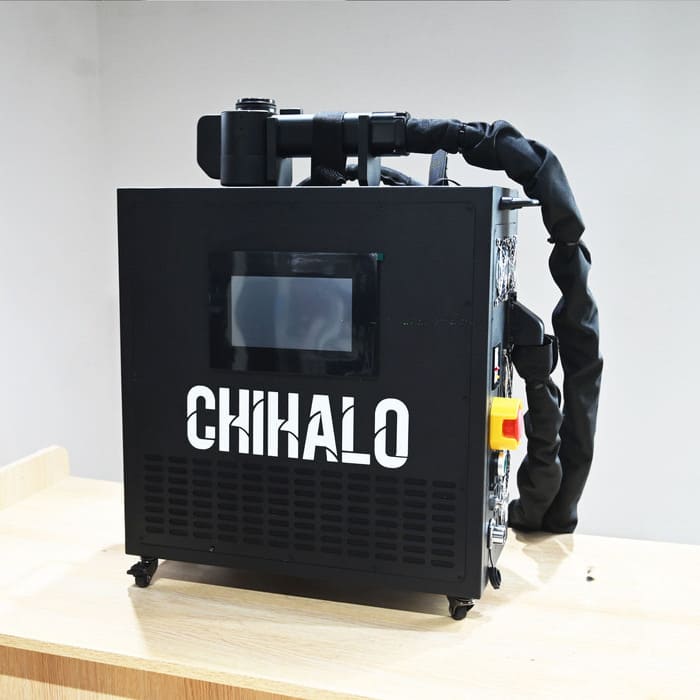Table of Contents
1 Introduction to Laser Stripping Machines for Wood
Laser stripping machiens for wood represents a cutting-edge method for removing coatings, paint, and other surface contaminants from various materials. This technology has proven particularly beneficial in applications involving delicate or intricate surfaces, such as wood. Here’s an overview of what a laser stripping machine is and the benefits of using laser technology for wood.
1.1 What is a Laser Stripping Machines for wood?
A laser stripping machine uses high-intensity laser beams to remove unwanted material from a surface. The machine directs a focused laser beam onto the surface, which heats the material and causes it to vaporize or sublimate (turn directly from a solid to a gas). This process effectively strips away coatings, paint, rust, or other contaminants without damaging the underlying material.
Key Components:
- Laser Source: Generates the laser beam.
- Optical Delivery System: Directs and focuses the laser beam onto the surface.
- Control System: Allows the operator to adjust laser parameters like power, pulse duration, and scanning speed.
- Fume Extraction System: Captures and filters out the vaporized particles and fumes produced during the process.
Applications:
- Laser stripping machines are used in various industries, including automotive, aerospace, restoration, and manufacturing. They are particularly effective for tasks that require precision and care, such as stripping paint from wood surfaces.
1.2 Benefits of Using Laser Strippng Machines for Wood
Precision and Control:
- High Accuracy: Laser stripping offers unparalleled precision, allowing for the targeted removal of coatings or paint without damaging the wood underneath. This is essential for preserving intricate details and ensuring a smooth, clean surface.
- Adjustable Settings: The ability to fine-tune laser parameters ensures that the process can be adapted to different types of wood and varying thicknesses of coatings.
Non-Contact Process:
- No Physical Damage: Because laser stripping on wood is a non-contact method, there is no risk of physical abrasion or mechanical stress on the wood. This preserves the wood’s integrity and prevents splintering or surface damage.
- Minimal Surface Preparation: Unlike mechanical stripping methods, which often require extensive surface preparation, laser stripping can be performed with minimal initial cleaning.
Environmental Benefits:
- Chemical-Free: Laser stripping machines does not involve the use of harmful chemicals, making it a more environmentally friendly option. It eliminates the need for chemical strippers and reduces hazardous waste.
- Low Waste Production: The process generates minimal waste, primarily in the form of vaporized particles, which can be easily managed with appropriate fume extraction systems.
Safety:
- Reduced Health Risks: By eliminating the use of toxic chemicals and minimizing manual labor, laser stripping significantly improves workplace safety. Operators are not exposed to harmful substances, and the risk of physical injury is reduced.
- Improved Working Conditions: The use of fume extraction systems ensures a cleaner working environment, free from dust and chemical fumes.
Efficiency and Speed:
- Faster Processing: Laser stripping machines for wood are generally faster than traditional methods, such as sanding or chemical stripping. This increases productivity and reduces project timelines.
- Consistent Results: The precision and control of laser technology ensure uniform and consistent stripping results, enhancing the quality of the finished product.
Versatility:
- Wide Range of Applications: Laser stripping machines for wood can be used on various types of wood and is effective in removing different kinds of coatings, including paint, varnish, and stains.
- Adaptability: The technology can be applied in diverse settings, from fine art restoration to large-scale industrial projects.
Conclusion
Laser stripping machines for wood offer a highly efficient, precise, and environmentally friendly solution for removing coatings and contaminants from wood surfaces. The non-contact nature, combined with adjustable settings and minimal waste production, makes laser technology an ideal choice for a wide range of applications. By adopting laser stripping, industries can achieve better quality results, improve safety, and contribute to environmental sustainability.
2 Understanding Laser Stripping Machines for Wood
Laser stripping machines provide a modern and efficient solution for removing coatings, paint, and other contaminants from wood surfaces. This technology leverages the power of laser beams to achieve precise and controlled stripping without damaging the underlying material. Here’s an in-depth look at how laser stripping machines work and the types of lasers used in wood stripping.
2.1 How Do Laser Stripping Machines for Wood Work?
Laser stripping machines for wood operate based on the principle of laser ablation, where high-intensity laser beams are used to remove material from a surface. Here’s a step-by-step explanation of the process:
Laser Generation:
- A laser source produces a coherent and monochromatic beam of light. The type of laser (fiber, CO2, Nd:YAG, etc.) determines the specific properties of the beam, such as wavelength and power.
Beam Delivery and Focusing:
- The laser beam is directed and focused onto the wood surface using an optical delivery system, which may include lenses, mirrors, and fiber optics. The beam is focused to a small spot size to achieve high energy density.
Absorption and Heating:
- The targeted coating or contaminant on the wood absorbs the laser energy. Different materials absorb laser light differently, but most coatings and paints absorb it efficiently.
Ablation and Vaporization:
- The absorbed energy causes rapid heating, leading to the vaporization or sublimation (transition from solid to gas) of the coating material. This process removes the unwanted layer without affecting the wood beneath.
Material Ejection:
- As the coating material vaporizes, the resulting gas and small particles are ejected from the surface. Fume extraction systems are used to capture and filter these byproducts, maintaining a clean work environment.
Controlled Removal:
- The laser parameters (power, pulse duration, and scanning speed) are precisely controlled to ensure that only the coating is removed, leaving the wood intact. This allows for layer-by-layer removal if necessary.
2.2 Types of Lasers Used in Wood Stripping
CO2 Lasers:
- Wavelength: 10,600 nm
- Characteristics: CO2 lasers are effective for organic materials, including wood. They produce continuous or pulsed beams and are known for their efficiency in cutting and engraving wood.
- Applications: Ideal for removing thick coatings and paints from large wooden surfaces. Suitable for applications requiring deep penetration and broad coverage.
Nd:YAG Lasers:
- Wavelength: 1064 nm
- Characteristics: Neodymium-doped Yttrium Aluminum Garnet (Nd:YAG) lasers offer high power and deep penetration. They can operate in continuous and pulsed modes, providing versatility in different stripping tasks.
- Applications: Effective for both surface cleaning and deeper material removal. Suitable for intricate woodwork and detailed stripping applications.
Fiber Lasers:
- Wavelength: Typically around 1070 nm
- Characteristics: Fiber lasers provide excellent beam quality and high efficiency. They are robust, require low maintenance, and offer precise control over the stripping process.
- Applications: Best for detailed and precision work on wood surfaces. Suitable for removing thin layers of coatings without damaging the underlying wood.
Diode Lasers:
- Wavelength: Varies, typically in the range of 808 nm to 980 nm
- Characteristics: Diode lasers are compact and energy-efficient. They are commonly used in smaller, portable systems for light-duty stripping tasks.
- Applications: Effective for minor coating removal and applications where portability is essential. Suitable for small-scale projects and fieldwork.
Conclusion
Laser stripping machines for wood offer a sophisticated and precise method for removing coatings and contaminants from wood surfaces. By understanding how these machines work and the types of lasers used, you can select the appropriate equipment for your specific needs. CO2, Nd:YAG, fiber, and diode lasers each have unique characteristics that make them suitable for different applications, ensuring effective and efficient wood stripping while preserving the integrity of the underlying material.
3 Choosing the Right Laser Stripping Machines for Wood
Selecting the appropriate laser paint stripping machines for wood involves evaluating several key factors to ensure it meets your specific requirements. Here’s a guide on what to consider when buying a laser stripping machine, along with a comparison of different brands and models.
3.1 Factors to Consider When Buying a Laser Stripping Machine
Laser Power and Type:
- Power Output: Determine the power level needed based on the thickness and type of coatings you will be removing. Higher power levels (e.g., 100W to 1000W) are suitable for thicker coatings and larger surfaces, while lower power levels (e.g., 20W to 100W) are adequate for finer, more detailed work.
- Laser Type: Choose the laser type (CO2, Nd:YAG, fiber, diode) that best suits your application. CO2 lasers are effective for larger areas and thicker coatings, while fiber and Nd:YAG lasers offer high precision for detailed work.
Adjustability and Control:
- Adjustable Settings: Look for machines with adjustable power, pulse duration, and scanning speed. This flexibility allows you to optimize the laser for different materials and coating thicknesses.
- Control Interface: A user-friendly interface, preferably with a touchscreen, simplifies operation and allows for precise control over the laser parameters.
Safety Features:
- Protective Enclosures: Ensure the machine has safety enclosures to contain the laser beam and prevent accidental exposure.
- Emergency Stop: Check for emergency stop buttons that can quickly shut down the laser in case of an emergency.
- Fume Extraction: A built-in fume extraction system is crucial for capturing and filtering harmful particles and fumes generated during the stripping process.
Portability and Size:
- Compact Design: If you need to move the machine between locations, consider its portability and weight. A compact design is beneficial for on-site and field applications.
- Weight: Ensure the machine is lightweight enough for easy transportation without compromising on power and functionality.
Durability and Maintenance:
- Build Quality: High-quality components and robust construction enhance the machine’s durability and longevity.
- Maintenance Requirements: Consider the maintenance needs of the machine. Opt for models that require minimal upkeep and offer easy access to replaceable parts.
Cost and Value:
- Budget: Determine your budget and compare the cost of different models while considering their features and benefits.
- Long-Term Value: Evaluate the long-term savings from reduced consumable use, lower maintenance costs, and increased efficiency.
Manufacturer Support:
- Training and Documentation: Ensure the manufacturer provides comprehensive training and detailed documentation to help you get the most out of your machine.
- Technical Support: Reliable technical support and after-sales service are crucial for resolving any issues quickly and maintaining optimal performance.
3.2 Comparing Different Brands and Models
CleanTech™ Titan 500W Fiber Laser Cleaner:
- Features: High power output, adjustable settings, robust safety features, efficient fume extraction system.
- Best For: Heavy-duty industrial applications requiring high power and efficiency.
- Pros: Excellent beam quality, durable construction, comprehensive support.
- Cons: Higher initial cost, larger size.
Laserax LXQ-500 Fiber Laser Cleaning System:
- Features: Advanced control interface, programmable settings, compact design, strong technical support.
- Best For: Versatile industrial use and on-site applications.
- Pros: High precision, portable, user-friendly.
- Cons: May require more frequent maintenance for high-intensity use.
P-Laser QF-300 Fiber Laser Cleaner:
- Features: High precision, user-friendly interface, lightweight and portable, excellent safety measures.
- Best For: Medium-duty industrial tasks and portable applications.
- Pros: Easy to use, efficient for detailed work, portable.
- Cons: Limited power for very thick coatings.
IPG Photonics LightWELD XC Fiber Laser Cleaner:
- Features: Superior beam quality, high adjustability, integrated safety features, comprehensive technical support.
- Best For: Large-scale industrial operations needing high power and efficiency.
- Pros: High power, excellent support, advanced features.
- Cons: High initial cost, less portable.
Chihalo Laser CF-500 Compact Laser Cleaner:
- Features: Compact size, easy-to-use interface, adjustable power settings, efficient fume extraction.
- Best For: Small to medium-sized projects and fieldwork.
- Pros: Highly portable, user-friendly, cost-effective.
- Cons: Limited power for heavy-duty applications.
Conclusion
Choosing the right laser stripping machines for wood requires careful consideration of factors such as laser power, adjustability, safety features, portability, durability, cost, and manufacturer support. By evaluating these aspects and comparing different brands and models, you can select a laser stripping machine that meets your specific needs and ensures efficient, safe, and effective stripping of coatings from wood and other materials. Investing in the right equipment will enhance your operational efficiency and provide high-quality results in various applications.
3.3 Chihalo Laser Stripping Machine for Wood Recommand
4 Applications of Laser Paint Stripping Machines for Wood
Laser stripping machines offer a versatile and efficient solution for various woodworking applications, particularly in furniture restoration and antique wood treatments. Here’s an overview of their common uses and advantages.
4.1 Common Uses in Furniture Restoration
-
Paint and Varnish Removal:
- Precision Stripping: Laser stripping machines can precisely remove layers of paint and varnish from wooden furniture without damaging the underlying material. This is especially useful for intricate designs and delicate surfaces where traditional methods might cause harm.
- Efficiency: The process is generally faster than sanding or chemical stripping, reducing the time required to prepare the furniture for refinishing.
-
Surface Cleaning:
- Removing Stains and Contaminants: Lasers can effectively remove stains, dirt, and other contaminants that have penetrated the wood surface over time. This helps restore the original appearance and quality of the wood.
- Mildew and Mold Removal: Laser cleaning can also eliminate mildew and mold from wood surfaces, ensuring a thorough and hygienic restoration process.
-
Detail Preservation:
- Intricate Carvings and Designs: For furniture with intricate carvings and detailed designs, laser stripping allows for the careful removal of unwanted coatings without damaging the fine details.
- Uniform Results: The precision of laser stripping ensures uniform results across the entire surface, maintaining the aesthetic integrity of the furniture.
-
Restoration of Heirloom Pieces:
- Minimal Impact: Laser stripping is non-abrasive and non-contact, which means it preserves the structural integrity and historical value of heirloom furniture.
- Versatility: The technology can be adjusted to work on various types of wood and different finishes, making it suitable for a wide range of restoration projects.
4.2 Advantages for Antique Wood Treatments
-
Gentle and Controlled Process:
- Non-Destructive: Laser stripping is a gentle method that does not physically touch or abrade the wood surface, making it ideal for treating antique and valuable wooden items.
- Controlled Removal: The ability to adjust laser settings allows for the controlled removal of coatings, ensuring that only the unwanted material is stripped away.
-
Preservation of Original Patina:
- Selective Stripping: Laser technology can be fine-tuned to remove specific layers while preserving the original patina and finish of antique wood. This is crucial for maintaining the authenticity and value of the piece.
- Layer-by-Layer Removal: For items with multiple layers of paint or varnish, laser stripping can selectively remove each layer, allowing for a meticulous and careful restoration process.
-
Environmental Benefits:
- Chemical-Free: Unlike chemical strippers, laser stripping does not use harmful substances, making it a more environmentally friendly option. This is particularly important for conserving historical pieces in a sustainable manner.
- Low Waste Production: The process generates minimal waste, primarily in the form of vaporized particles, which can be easily managed with fume extraction systems.
-
Safety and Health:
- Reduced Health Risks: By eliminating the need for toxic chemicals and reducing dust and debris, laser stripping significantly improves workplace safety and reduces health risks for restorers.
- Cleaner Work Environment: The use of fume extraction systems ensures that the work environment remains clean and free from hazardous particles.
-
Enhanced Efficiency:
- Time Savings: Laser stripping is generally faster than traditional methods, allowing restorers to complete projects more quickly without compromising on quality.
- Consistency: The precision and control of laser stripping ensure consistent results, enhancing the overall quality of the restoration work.
Conclusion
Laser stripping machines are a valuable tool in woodworking, particularly for furniture restoration and antique wood treatments. Their precision, efficiency, and non-destructive nature make them ideal for removing coatings, cleaning surfaces, and preserving intricate details. Additionally, the environmental and safety benefits of laser stripping contribute to its growing popularity in the restoration and conservation of valuable wooden items. By adopting laser technology, restorers can achieve superior results while maintaining the integrity and authenticity of the wood.
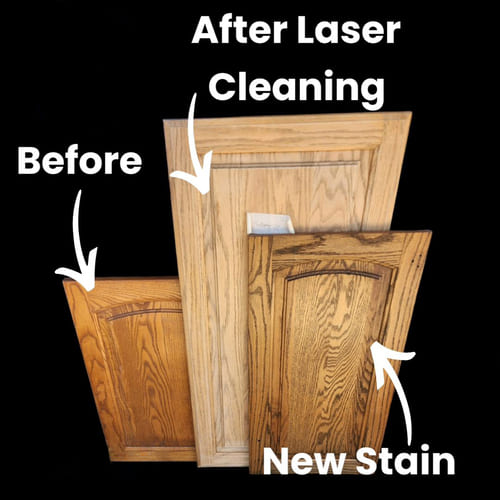
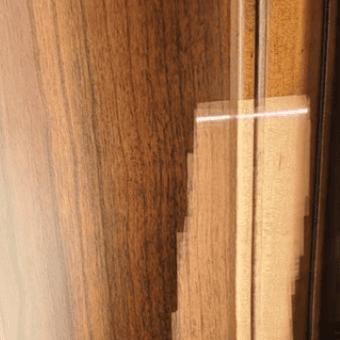
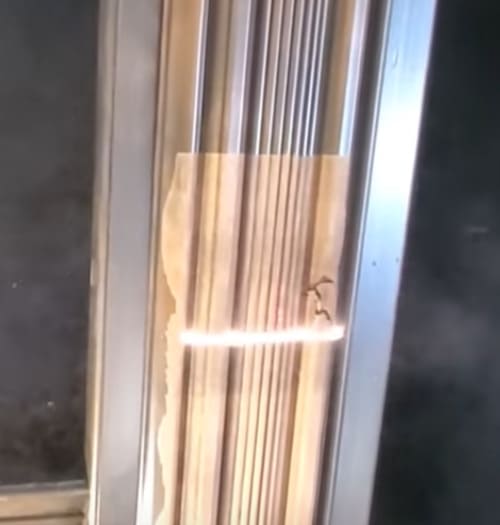
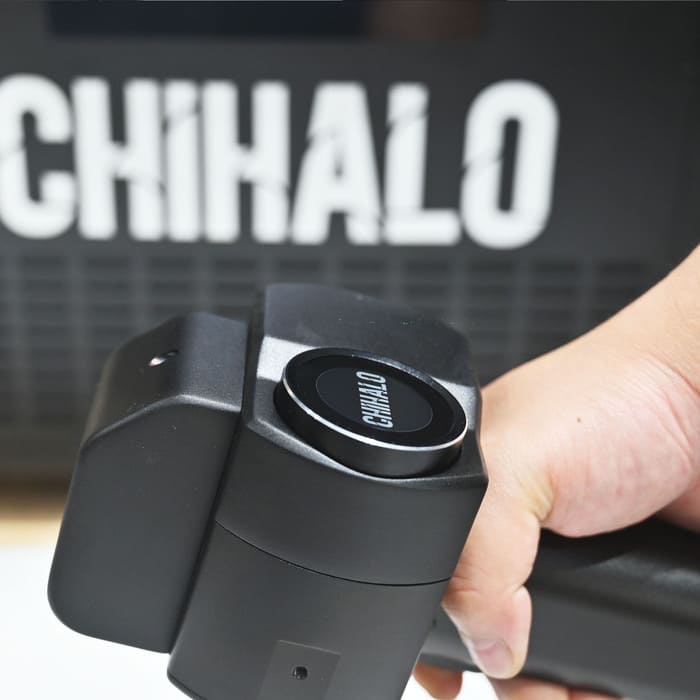
5 Step-by-Step Guide to Operating a Laser Stripping Machines for Wood
Operating a laser stripping machines for wood involves several key steps to ensure safety and efficiency. Here’s a comprehensive guide on how to operate the machine, including essential safety procedures and maintenance tips.
5.1 Safety Procedures and Precautions
Wear Appropriate Safety Gear:
- Laser Safety Goggles: Always wear laser safety goggles rated for the specific wavelength of the laser to protect your eyes.
- Protective Clothing: Wear long-sleeved clothing, gloves, and closed-toe shoes to protect your skin from laser exposure and debris.
- Respiratory Protection: Use a mask or respirator if there is a risk of inhaling fumes or particles, especially in poorly ventilated areas.
Prepare the Workspace:
- Ensure Proper Ventilation: Set up fume extraction systems to manage fumes and particles generated during the process. Make sure the work area is well-ventilated.
- Mark Off the Work Area: Use barriers or signs to mark off the laser cleaning area to prevent unauthorized access and ensure safety.
Check the Equipment:
- Inspect the Laser Head: Check for any visible damage or wear on the laser head and optics. Ensure there is no debris or contamination on the lenses.
- Test Safety Interlocks: Verify that all safety interlocks are engaged and functioning correctly. Disengaged interlocks can prevent the laser from firing.
- Power Supply: Ensure the laser system is properly connected to the power supply and that all switches are turned on.
5.2 Step-by-Step Operating Procedure
Power Up the Laser:
- Turn on the laser cleaning machine following the manufacturer’s instructions. Ensure all components, including the cooling and fume extraction systems, are functioning correctly.
Set Laser Parameters:
- Adjust Power and Frequency: Set the laser power and pulse frequency according to the material and thickness of the coating or rust to be removed. Higher power settings are suitable for thicker layers.
- Set Scanning Speed: Choose an appropriate scanning speed to ensure uniform removal. Slower speeds may be needed for thicker layers, while faster speeds can be used for lighter coatings.
Focus the Laser Beam:
- Adjust the focus of the laser beam to ensure it is precisely targeted on the surface. Proper focusing enhances the efficiency and effectiveness of the stripping process.
Begin the Stripping Process:
- Start Cleaning: Begin moving the laser head over the surface in a consistent pattern. Maintain a steady pace to ensure uniform removal. Overlapping passes may be necessary for thicker or more stubborn coatings.
- Monitor Progress: Continuously monitor the process to ensure effective removal without damaging the underlying material. Adjust the laser settings as needed based on real-time observations.
Use Fume Extraction:
- Ensure the fume extraction system is operational to capture and filter out vaporized particles and fumes. This helps maintain a clean and safe work environment.
Inspect and Clean:
- Periodically stop to inspect the surface. Ensure that the coating or rust is being effectively removed and that the underlying material is intact. Use a brush or cloth to wipe away any residual particles.
- Complete the process until all unwanted material is removed. Make sure to cover all areas uniformly, including edges and corners.
5.3 Maintenance Tips to Extend Laser Cleaner’s Life
Daily Maintenance:
- Clean the Optics: Use recommended cleaning solutions and soft, non-abrasive cloths to clean the laser optics. Dust and residue can affect beam quality and performance.
- Inspect Cables and Connections: Check all cables and connections for signs of wear or damage. Ensure all connections are secure.
Weekly Maintenance:
- Inspect Cooling System: Ensure that the cooling system (air or water-cooled) is functioning properly. Clean filters and check fluid levels in water-cooled systems. Replace or refill as necessary.
- Test Safety Features: Regularly test all safety features, including emergency stop buttons and interlocks, to ensure they are working correctly.
Monthly Maintenance:
- Calibration: Perform a calibration check to ensure the laser is operating at the correct power levels and beam quality. Recalibrate if necessary.
- Inspect Moving Parts: Lubricate and inspect any moving parts or mechanisms for wear. Replace any worn components to prevent malfunctions.
Annual Maintenance:
- Professional Servicing: Schedule an annual service with a qualified technician to perform a thorough inspection, cleaning, and any necessary repairs. This helps identify and address issues that may not be visible during routine maintenance.
Conclusion
Operating a laser stripping machine safely and effectively requires adherence to safety procedures, proper setup, and regular maintenance. By following the step-by-step operating procedures and implementing routine maintenance tips, you can ensure the longevity and optimal performance of your laser stripping machine. This approach not only enhances safety but also improves the quality and efficiency of your stripping tasks, making laser technology a valuable tool in your operations.
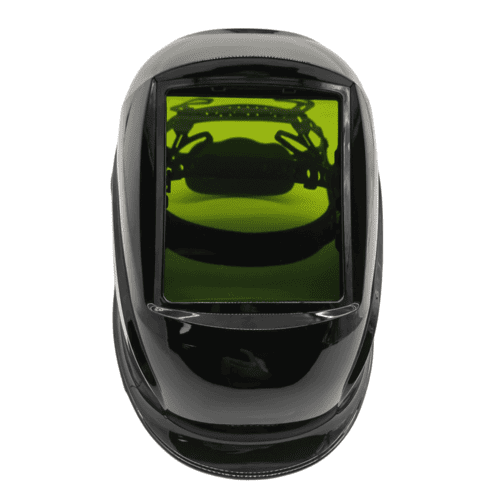
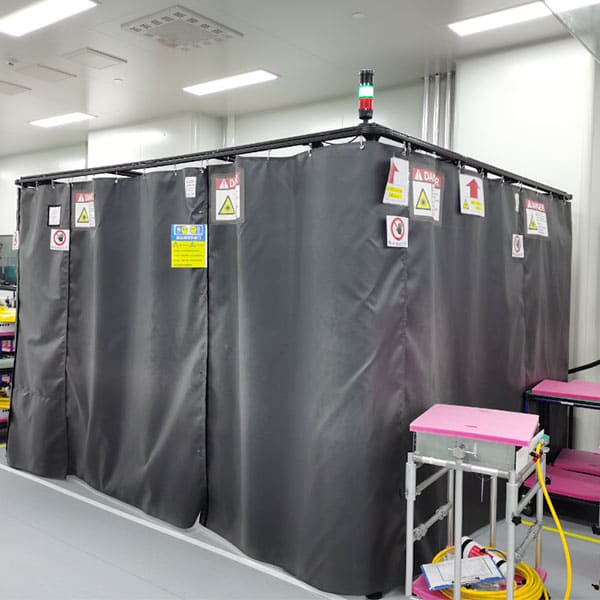
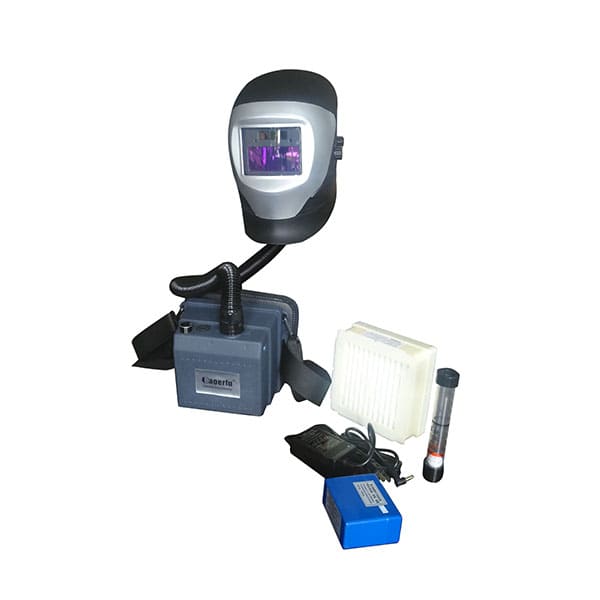

6 Case Studies: Success Stories of Laser Stripping Machines for Wood
Laser stripping machines for wood have revolutionized surface preparation and restoration across various industries. Here are some success stories highlighting the transformative power of laser stripping, along with insights from industry experts.
6.1 Before and After: Transformations Achieved with Laser Technology
Case Study 1: Furniture Restoration
Project Overview:
- A high-end furniture restoration company took on the task of restoring a 19th-century wooden cabinet that was heavily coated with multiple layers of old paint and varnish. Traditional methods were deemed too risky for the intricate carvings and delicate wood.
Laser Cleaner Used:
- P-Laser QF-300 Fiber Laser Cleaner
Process:
- Initial Assessment:
- The restoration team evaluated the thickness and condition of the coatings and determined the optimal laser settings.
- Surface Preparation:
- The cabinet was cleaned of loose dirt and debris. Safety measures, including protective gear and fume extraction, were put in place.
- Laser Stripping:
- The laser cleaner was set to low power for delicate areas and higher power for thicker layers. A systematic approach ensured all surfaces were treated uniformly.
- Monitoring:
- Continuous monitoring and adjustments ensured effective stripping without damaging the intricate carvings.
Outcome:
- Before: The cabinet was obscured by thick, uneven layers of paint and varnish, hiding its intricate details.
- After: The laser stripping machine for wood revealed the beautiful wood grain and detailed carvings, restoring the cabinet to its original splendor. The process was completed efficiently without any damage to the delicate features.
Client Feedback:
- “The laser cleaner allowed us to restore this antique piece with a level of precision and care that would have been impossible with traditional methods. The results were astounding,” said Sarah Jones, Lead Restorer at the company.
Case Study 2: Industrial Application
Project Overview:
- An aerospace manufacturing plant needed to remove coatings and contaminants from aluminum components used in aircraft. The traditional chemical stripping methods were time-consuming and hazardous.
Laser Cleaner Used:
- IPG Photonics LightWELD XC Fiber Laser Cleaner
Process:
- Initial Setup:
- The components were inspected to determine the extent of contamination and appropriate laser settings.
- Preparation:
- The parts were cleaned of loose contaminants, and safety protocols were implemented.
- Laser Cleaning:
- The laser cleaner was used to remove the coatings and contaminants. Adjustments were made to optimize the process for different parts.
- Quality Control:
- The cleaned parts were inspected to ensure all contaminants were removed and the aluminum surfaces were pristine.
Outcome:
- Before: The components were coated with stubborn contaminants that affected their performance and safety.
- After: The laser cleaning process efficiently removed all contaminants, restoring the components to their original condition and ensuring they met stringent aerospace standards.
Client Feedback:
- “Laser cleaning has significantly improved our maintenance process. It’s faster, safer, and more environmentally friendly than the chemical methods we used before,” said Mark Thompson, Maintenance Manager at the aerospace plant.
6.2 Interviews with Industry Experts
Interview with Dr. Emily Clark, Art Conservation Specialist
Q: How has laser cleaning impacted the field of art conservation?
- Dr. Clark: Laser technology has been a game-changer for art conservation. It allows us to clean and restore delicate artifacts with incredible precision, preserving their integrity and historical value. The ability to remove specific layers without touching the underlying material is invaluable.
Q: Can you share a memorable project where laser cleaning made a significant difference?
- Dr. Clark: We recently restored a centuries-old wooden sculpture that had been painted over multiple times. Traditional methods risked damaging the fine details, but with laser cleaning, we were able to carefully strip away each layer of paint, revealing the original wood and intricate carvings underneath. The transformation was remarkable, and the sculpture’s historical authenticity was preserved.
Interview with Michael Johnson, CEO of Industrial Laser Solutions
Q: What are the primary benefits of laser stripping machines for wood in industrial applications?
- Michael Johnson: The key benefits are precision, efficiency, and environmental friendliness. Laser stripping allows for targeted removal of coatings without damaging the base material, which is crucial in industries like aerospace and automotive. It’s also faster and produces less waste compared to traditional methods.
Q: How do you see the future of laser stripping technology evolving?
- Michael Johnson: The future is very promising. We’re seeing advancements in laser power and control, making the technology even more effective and versatile. Integration with robotics and AI will further enhance its capabilities, allowing for fully automated, highly precise cleaning processes. This will open up new applications and further drive adoption across various industries.
Conclusion
These case studies and expert insights highlight the transformative impact of laser stripping machines for wood across different fields. From restoring antique furniture to maintaining high-tech aerospace components, laser cleaners provide a precise, efficient, and environmentally friendly solution for surface preparation and restoration. As the technology continues to advance, its applications and benefits are expected to expand, solidifying laser stripping as a key tool in modern industry and conservation efforts.
7 Troubleshooting Common Issues with Laser Stripping Machines for Wood
Laser stripping machines for wood are highly efficient tools, but like any technology, they can encounter operational challenges. Understanding how to troubleshoot these issues and implement best practices can help maintain optimal performance. Here are some common problems and their solutions, along with tips for enhancing machine performance.
7.1 Solving Operational Challenges
Laser Not Firing:
- Check Power Supply: Ensure the laser system is properly connected to the power supply and that all switches are turned on.
- Inspect Safety Interlocks: Verify that all safety interlocks are engaged and functioning correctly. Disengaged interlocks can prevent the laser from firing.
- Review Control Settings: Check the control panel settings to ensure the laser is set up correctly. Incorrect settings can prevent the laser from operating.
- Examine Cables and Connections: Inspect all cables and connections for signs of wear or damage. Ensure all connections are secure.
Reduced Laser Power or Beam Quality:
- Clean Optics: Dirty or contaminated optics can reduce laser power and beam quality. Use recommended cleaning solutions and soft, non-abrasive cloths to clean all lenses and mirrors.
- Check Alignment: Misaligned optics can affect performance. Ensure that all optical components are properly aligned.
- Inspect Cooling System: An inefficient cooling system can cause overheating, reducing laser power. Check and maintain the cooling system, including cleaning filters and checking coolant levels.
Overheating:
- Verify Cooling System: Ensure the cooling system is functioning properly. Clean or replace filters, check coolant levels, and ensure there is adequate airflow.
- Adjust Duty Cycle: If the laser is overheating, reduce the duty cycle by allowing more frequent breaks during extended use.
- Monitor Ambient Temperature: High ambient temperatures can contribute to overheating. Ensure the work environment is well-ventilated and kept at a moderate temperature.
Inconsistent Cleaning Results:
- Adjust Settings: Ensure that the laser settings (power, pulse duration, scanning speed) are appropriate for the material and coating thickness.
- Monitor Movement: Inconsistent movement of the laser head can lead to uneven cleaning. Ensure the laser head moves smoothly and uniformly over the surface.
- Inspect Surface Preparation: Make sure the surface is clean and free of loose debris before starting the laser stripping process.
System Errors or Alarms:
- Consult Manual: Refer to the user manual for specific error codes and troubleshooting steps. Follow the recommended actions to resolve the issue.
- Reset System: Sometimes, resetting the system can clear temporary errors. Turn off the laser cleaner, wait a few moments, and then restart it.
- Contact Support: If the issue persists, contact the manufacturer’s technical support for assistance. Provide detailed information about the error and any troubleshooting steps already taken.
7.2 Tips for Enhancing Machine Performance
Regular Maintenance:
- Daily Checks: Inspect the laser head, optics, cables, and connections daily. Clean the optics and ensure all components are in good condition.
- Weekly Maintenance: Check the cooling system, test safety features, and review control settings weekly. Clean filters and check fluid levels in water-cooled systems.
- Monthly Maintenance: Perform calibration checks and inspect moving parts for wear. Lubricate and replace any worn components as necessary.
- Annual Servicing: Schedule an annual service with a qualified technician to perform a thorough inspection, cleaning, and any necessary repairs.
Optimize Laser Settings:
- Tailor Settings to Material: Adjust the laser power, pulse duration, and scanning speed to suit the specific material and coating thickness. Test on a small area first to determine the optimal settings.
- Use Appropriate Scanning Patterns: Choose scanning patterns that ensure uniform coverage and efficient material removal. Overlapping passes may be necessary for thicker coatings.
Enhance Safety Measures:
- Use Proper Safety Gear: Always wear laser safety goggles, protective clothing, and respiratory protection if needed.
- Ensure Adequate Ventilation: Use fume extraction systems to manage fumes and particles. Maintain good ventilation in the work area to prevent overheating and ensure operator safety.
Monitor and Adjust:
- Continuous Monitoring: Regularly monitor the stripping process to ensure consistent results. Make real-time adjustments as needed to optimize performance.
- Document Settings and Results: Keep detailed records of laser settings, surface conditions, and cleaning results. This helps identify patterns and optimize future operations.
Training and Education:
- Comprehensive Training: Ensure all operators receive thorough training on the laser stripping machine, including safety procedures and troubleshooting techniques.
- Ongoing Education: Stay updated with the latest advancements in laser technology and best practices through continuous education and training.
Conclusion
By addressing common operational challenges and implementing best practices, you can ensure the optimal performance and longevity of your laser stripping machine. Regular maintenance, tailored settings, enhanced safety measures, continuous monitoring, and comprehensive training are key to achieving consistent and high-quality results. These steps will help you maximize the efficiency and effectiveness of your laser stripping operations.
8 Cost Analysis of Laser Stripping Machines for Wood
Investing in a laser stripping machine involves a significant initial outlay, but the long-term benefits can make it a cost-effective solution compared to traditional methods. Here’s a detailed cost analysis, including the initial investment, long-term benefits, and a cost comparison with traditional stripping methods.
8.1 Initial Investment vs. Long-Term Benefits
Initial Investment:
- Purchase Price: The cost of laser stripping machines can range from $10,000 for entry-level models to over $100,000 for high-end industrial systems. The price depends on the power, capabilities, and brand of the machine.
- Installation and Setup: Additional costs may include installation, setup, and any necessary modifications to the workspace to accommodate the laser system.
- Training: Investing in proper training for operators is crucial. Training programs may add to the initial investment but are essential for safe and effective operation.
Long-Term Benefits:
- Operational Efficiency: Laser stripping is typically faster and more efficient than traditional methods, reducing labor costs and increasing productivity.
- Maintenance Costs: Laser systems generally require less maintenance than mechanical equipment. The absence of consumables such as abrasives or chemicals also reduces ongoing costs.
- Precision and Quality: The high precision of laser stripping minimizes the risk of damaging the underlying material, reducing the need for rework and improving overall quality.
- Environmental Compliance: Avoiding chemicals means fewer regulatory compliance costs related to hazardous waste disposal and environmental impact.
- Longevity of Equipment: With proper maintenance, laser systems have a long operational life, providing a better return on investment over time.
8.2 Cost Comparison with Traditional Methods
Mechanical Methods (e.g., Sandblasting, Grinding):
- Initial Costs: Mechanical equipment like sandblasters are relatively inexpensive compared to laser systems, with costs typically ranging from a few hundred to several thousand dollars.
- Operational Costs: Higher due to the need for consumables (abrasives), frequent replacement of parts, and significant labor costs.
- Efficiency and Quality: While effective for large areas, mechanical methods lack the precision of lasers, potentially leading to more material waste and damage.
Chemical Stripping:
- Initial Costs: Chemicals and application tools are relatively low-cost upfront.
- Operational Costs: High due to the need for continuous supply of chemicals, protective equipment for workers, and costs associated with hazardous waste disposal.
- Environmental and Health Costs: Significant environmental impact and health risks for operators, leading to potential regulatory fines and increased insurance premiums.
- Speed and Precision: Generally slower and less precise than laser methods, often requiring additional finishing work.
Cost Comparison Summary:
- Initial Investment: Laser stripping machines have a higher initial investment compared to traditional methods.
- Long-Term Savings: Reduced operational costs, lower maintenance needs, higher efficiency, and better quality result in long-term savings with laser systems.
- Return on Investment: Despite the higher upfront cost, the long-term benefits of laser stripping can result in a lower total cost of ownership, particularly for high-volume or precision-dependent applications.
Conclusion
While the initial investment in laser stripping machines is substantial, the long-term benefits make it a cost-effective solution for many industries. The efficiency, precision, and lower ongoing costs associated with laser systems provide significant advantages over traditional mechanical and chemical methods. For businesses looking to improve quality, reduce operational costs, and minimize environmental impact, investing in laser stripping technology is a strategic decision that offers substantial long-term returns.
9 Future Trends in Laser Cleanining for Wood
The field of laser technology for wood stripping and treatment is rapidly evolving, with significant innovations on the horizon. These advancements are set to enhance the efficiency, precision, and versatility of laser applications in woodworking. Here’s an overview of key future trends, including the impact of automation and AI in wood stripping.
9.1 Innovations on the Horizon
Enhanced Laser Precision and Control:
- Adaptive Optics: Development of adaptive optics will allow real-time adjustments to the laser beam’s focus and shape, improving precision and enabling more detailed work on intricate wood surfaces.
- Beam Shaping Technology: Advanced beam shaping will ensure uniform energy distribution, minimizing the risk of damage and enhancing the quality of stripping and engraving.
Higher Power and Efficiency:
- Ultrafast Lasers: The use of picosecond and femtosecond lasers, which offer higher power with minimal heat transfer, will become more prevalent. These lasers will be ideal for fine, detailed wood stripping and engraving tasks.
- Energy Efficiency: Innovations in laser diodes and fiber optics will lead to more energy-efficient systems, reducing operational costs and environmental impact.
Improved User Interfaces and Control Systems:
- Intuitive Control Panels: Future laser systems will feature more intuitive control interfaces, often with touchscreens and user-friendly software, simplifying the operation and allowing for more precise control over laser parameters.
- Real-Time Monitoring: Integration of real-time monitoring systems will provide continuous feedback, ensuring optimal performance and allowing for immediate adjustments as needed.
Portability and Compact Design:
- Miniaturization: Advances in technology will lead to smaller, more portable laser systems, making them easier to use in field applications and for on-site projects.
- Battery-Powered Systems: Development of high-capacity battery-powered laser systems will provide greater flexibility and mobility, particularly for remote or outdoor work.
Environmentally Friendly Technologies:
- Chemical-Free Stripping: As environmental regulations become stricter, the shift towards laser stripping, which does not require harmful chemicals, will continue. This method produces minimal waste and is safer for both operators and the environment.
- Sustainable Practices: Manufacturers will adopt more sustainable practices in the production of laser systems, including the use of recycled materials and eco-friendly manufacturing processes.
9.2 The Impact of Automation and AI in Wood Stripping
Automation:
- Robotic Integration: The integration of laser stripping machines for wood with robotics will allow for fully automated wood stripping and engraving processes. Robots equipped with laser heads can perform continuous, precise work with minimal human intervention.
- Increased Efficiency: Automation will significantly enhance efficiency, allowing for faster processing times and higher throughput. This will be particularly beneficial in industrial applications where large volumes of work are required.
Artificial Intelligence (AI):
- AI-Driven Optimization: AI algorithms will optimize laser settings in real-time based on the specific characteristics of the wood and the task at hand. This will improve the quality and consistency of the work.
- Predictive Maintenance: AI will enable predictive maintenance by analyzing usage patterns and performance data to predict when maintenance is needed, reducing downtime and extending the lifespan of the equipment.
- Customizable Patterns and Designs: AI-powered software will allow for the creation of highly detailed and customizable patterns and designs, enhancing the versatility and creative potential of laser wood treatment.
Smart Monitoring and Feedback:
- Real-Time Adjustments: Advanced sensors and real-time feedback mechanisms will enable continuous monitoring of the stripping process, ensuring consistent quality and allowing for immediate corrections if needed.
- Data Analytics: Integration with IoT platforms will facilitate comprehensive data collection and analysis, providing insights that can be used to further optimize the process and improve overall efficiency.
Conclusion
The future of laser technology for wood stripping and treatment is poised for significant advancements. Innovations in precision, power, and efficiency, combined with the integration of automation and AI, will transform the way laser systems are used in woodworking. These trends will enhance the quality, speed, and environmental sustainability of laser applications, making them an increasingly valuable tool in the industry. As these technologies continue to evolve, they will open up new possibilities and set new standards for excellence in wood stripping and treatment.
10 FAQs: Everything You Need to Know About Laser Stripping Machines
Laser stripping machines are becoming increasingly popular due to their precision, efficiency, and versatility. Here are some common queries addressed, along with expert advice for potential buyers.
10.1 Addressing Common Queries
-
What is a Laser Stripping Machine?
- Answer: A laser stripping machine uses high-intensity laser beams to remove coatings, paint, rust, and other contaminants from surfaces. The process, known as laser ablation, vaporizes the unwanted material without damaging the underlying substrate.
-
How Does Laser Stripping Work?
- Answer: The laser beam is directed and focused onto the surface, where it heats and vaporizes the coating or contaminant. The vaporized particles are then captured by a fume extraction system, leaving the underlying material clean.
-
What Materials Can Laser Stripping Be Used On?
- Answer: Laser stripping is effective on various materials, including metals, wood, plastics, and composites. It can be used to remove paint, rust, varnish, and other coatings.
-
Is Laser Stripping Safe?
- Answer: Yes, laser stripping is safe when proper safety protocols are followed. Operators should wear laser safety goggles, protective clothing, and use fume extraction systems to manage fumes and particles.
-
What Are the Advantages of Laser Stripping?
- Answer: Key advantages include high precision, non-contact process, minimal waste production, chemical-free operation, and the ability to handle intricate and delicate surfaces without causing damage.
-
What Are the Initial Costs Involved?
- Answer: The initial investment for laser stripping machines can range from $10,000 to over $100,000, depending on the model and features. Additional costs may include installation, setup, and training.
-
What Are the Long-Term Benefits?
- Answer: Long-term benefits include reduced operational costs, lower maintenance needs, higher efficiency, improved quality, and environmental compliance. Laser systems have a long operational life, providing a good return on investment over time.
-
How Do I Maintain a Laser Stripping Machine?
- Answer: Regular maintenance includes daily cleaning of optics, weekly checks of the cooling system and safety features, monthly calibration, and annual professional servicing. Keeping the machine in good condition ensures optimal performance and longevity.
10.2 Expert Advice for Potential Buyers
-
Evaluate Your Needs:
- Advice: Assess the types of materials and coatings you need to remove, the scale of your projects, and the level of precision required. This will help you determine the appropriate power and features for your laser stripping machine.
-
Consider the Total Cost of Ownership:
- Advice: Look beyond the initial purchase price and consider long-term savings from reduced consumable use, lower maintenance costs, and increased efficiency. Calculate the return on investment based on your specific use case.
-
Choose the Right Laser Type:
- Advice: Select the laser type (CO2, Nd:YAG, fiber, diode) that best suits your applications. CO2 lasers are effective for larger areas and thicker coatings, while fiber and Nd:YAG lasers offer high precision for detailed work.
-
Check for Safety Features:
- Advice: Ensure the machine has robust safety features, including protective enclosures, emergency stop buttons, and fume extraction systems. Proper safety measures are essential for safe operation.
-
Assess Ease of Use:
- Advice: Look for machines with user-friendly interfaces, preferably with touchscreens and intuitive controls. The ability to easily adjust settings and monitor the process can enhance productivity and results.
-
Consider Portability:
- Advice: If you need to move the machine between locations, choose a model that is lightweight and compact. Portable designs are beneficial for on-site applications and fieldwork.
-
Review Manufacturer Support:
- Advice: Ensure the manufacturer provides comprehensive training, detailed documentation, and reliable technical support. Good after-sales service is crucial for addressing issues and maintaining performance.
-
Test Before You Buy:
- Advice: Whenever possible, request a demonstration or trial period to test the machine’s capabilities and see how it performs with your specific materials and coatings. This can help you make a more informed decision.
Conclusion
Laser stripping machines offer numerous advantages for surface preparation and restoration. By addressing common queries and considering expert advice, potential buyers can make informed decisions to select the right machine for their needs. Evaluating the total cost of ownership, choosing the appropriate laser type, ensuring safety, and reviewing manufacturer support are key steps in the purchasing process. Investing in the right laser stripping machine can enhance efficiency, precision, and overall project quality.
11 Conclusion: Is a Laser Stripping Machine Right for You?
Laser stripping machines offer a range of benefits that can significantly improve surface preparation and restoration processes. However, determining whether this technology is the right investment for you requires careful consideration of its advantages and your specific needs. Here’s a summary of the key benefits and considerations to help you decide.
11.1 Summarizing the Benefits and Considerations
Benefits of Laser Stripping Machines:
- Precision and Control: Laser stripping provides unparalleled precision, allowing for the targeted removal of coatings without damaging the underlying material. This is crucial for intricate and delicate surfaces.
- Non-Contact Process: The non-abrasive nature of laser stripping ensures there is no physical stress or damage to the substrate, preserving its structural integrity and original finish.
- Environmental Benefits: Laser stripping is a chemical-free process that eliminates the need for hazardous substances and produces minimal waste. This makes it an environmentally friendly option.
- Safety: When proper safety protocols are followed, laser stripping significantly reduces health risks associated with chemical exposure and physical abrasion.
- Efficiency and Speed: Laser stripping is generally faster than traditional methods, improving productivity and reducing project timelines.
- Versatility: Laser stripping machines can handle a wide range of materials, including metals, wood, plastics, and composites. They are effective for various coatings, such as paint, varnish, and rust.
- Cost-Effectiveness: Despite the higher initial investment, the long-term savings from reduced consumable use, lower maintenance costs, and increased efficiency make laser stripping a cost-effective solution.
Considerations:
- Initial Investment: The upfront cost of laser stripping machines can be substantial, ranging from $10,000 to over $100,000. Consider your budget and the potential return on investment.
- Training and Setup: Proper training for operators is essential to ensure safe and effective use. Additionally, setup and installation may require modifications to your workspace.
- Maintenance: Regular maintenance is required to keep the machine in optimal condition. This includes daily cleaning, weekly checks, monthly calibration, and annual professional servicing.
- Specific Applications: Evaluate whether the types of materials and coatings you work with are suitable for laser stripping. Ensure the machine’s capabilities align with your specific needs.
- Portability and Size: If you need to move the machine between locations, consider its portability and weight. Compact and portable designs are beneficial for on-site and field applications.
- Manufacturer Support: Ensure the manufacturer provides comprehensive training, detailed documentation, and reliable technical support. Good after-sales service is crucial for addressing issues and maintaining performance.
11.2 Final Thoughts on Making the Investment
Investing in a laser stripping machine can be a game-changer for your surface preparation and restoration projects. The technology offers significant advantages in terms of precision, efficiency, and environmental sustainability. However, it’s important to carefully evaluate your specific needs, budget, and long-term goals before making the investment.
- Assess Your Needs: Consider the types of projects you typically undertake and the materials you work with. Determine whether the precision and efficiency of laser stripping align with your requirements.
- Calculate ROI: Evaluate the potential return on investment by considering the long-term savings in consumables, maintenance, and labor costs. Factor in the increased productivity and quality of results.
- Ensure Proper Training: Invest in comprehensive training for your operators to maximize the benefits of the technology and ensure safe operation.
- Review Manufacturer Support: Choose a reputable manufacturer that offers strong technical support and after-sales service. This will help you maintain the machine’s performance and address any issues that arise.
By thoroughly considering these factors, you can make an informed decision about whether a laser stripping machine is the right choice for your business. If the benefits align with your needs and you’re prepared to make the initial investment, a laser stripping machine can enhance your operations and provide long-term value.
12. FAQ
Laser stripping machines for wood typically range from $7,000 to $130,000 depending on power (100W-3000W), features, and brand. Entry-level handheld models start at $7,000-$15,000. Consider total cost of ownership including maintenance, training, and operational savings when evaluating price.
The most affordable effective laser stripping machine for wood starts around $7,000-$8,000 for a 100W handheld pulsed laser cleaner. These entry-level models are suitable for furniture restoration, small projects, and light paint removal. Brands like Chihalo and portable suitcase models offer good value for beginners.
Yes, for businesses doing regular paint stripping on wood. Despite higher upfront costs, you save 60-80% on consumables (no chemicals/sandpaper), reduce labor time by 3-5x, eliminate waste disposal costs, and achieve superior results. Most businesses see ROI within 6-18 months depending on usage volume.
For wood paint stripping, 100W-500W pulsed fiber lasers work best. 100W handles thin paints and varnishes, 200W removes multiple paint layers efficiently, and 500W works for thick industrial coatings. Avoid continuous wave lasers as they can burn wood. Fiber lasers (1064nm wavelength) are preferred over CO2 for wood applications.
No, it will not damage the wood surface when properly configured. Laser stripping is non-contact and adjustable, allowing precise removal of only the coating layer. Pulsed lasers minimize heat transfer, preventing wood burning or scarring. The key is using correct power settings, pulse duration, and scanning speed for your specific wood type and coating thickness.
Laser stripping effectively removes water-based paints, acrylics, latex, varnishes, and most oil-based paints up to 300μm thick. Less effective on high-gloss UV coatings, epoxy, and polyurethane which reflect laser energy. Lead paint removal is possible but requires proper safety protocols and fume extraction due to toxic vapors.
For furniture restoration, choose a 300W-500W handheld pulsed laser cleaner with adjustable settings. Models like Chihalo CF-500 or portable suitcase designs are ideal. Look for fine power control, compact size for detailed work, and good fume extraction. These preserve intricate carvings and original wood grain that traditional methods might damage.
Yes, but choose higher power models (500W-1000W) with wider beam patterns for efficiency. Continuous wave lasers or automated systems work better for large areas. Consider rental for one-time projects, as large-area models cost $30,000-$80,000. For professional flooring contractors, the time savings justify the investment.
Excellent for antiques. Laser stripping is the gentlest method available, preserving original patina, wood grain, and structural integrity. It can remove layers selectively, maintaining authenticity crucial for valuable pieces. Museums and high-end restorers prefer laser stripping for irreplaceable wooden artifacts.
Laser stripping can remove many wood stains, but effectiveness depends on stain type and penetration depth. Surface stains (gel stains, some water-based stains) remove easily with 100W-200W lasers. Penetrating oil stains that soak deep into wood grain are more challenging and may require multiple passes or higher power. Alcohol-based stains typically respond well to laser treatment. However, some deep-penetrating stains may only lighten rather than completely disappear. Always test on hidden areas first to assess results before treating visible surfaces.
No, laser strippers require zero consumables - no sandpaper, chemicals, or abrasive media. The only ongoing costs are electricity (typically $0.10-0.50 per hour of operation) and periodic maintenance. This eliminates the recurring expense of sandpaper ($50-200/month), chemical strippers ($100-500/month), and disposal fees ($50-300/month) that traditional methods require. Over time, the consumable savings alone can justify a laser stripper purchase, typically within 6-18 months for businesses doing regular stripping work.
Laser stripping machines require minimal maintenance compared to traditional equipment. Daily: Clean protective lens and check fume extraction. Weekly: Inspect cables and cooling system. Monthly: Calibrate power output and clean internal optics. Annually: Professional service including laser diode inspection and replacement of wear items. Total annual maintenance cost: $500-2,000. Fiber lasers need the least maintenance, while CO2 systems require more frequent attention. Proper maintenance extends machine life to 15-20 years and ensures consistent performance.
Laser stripping is superior for wood. Sandblasting is too aggressive, damages wood grain, creates dust, and can embed abrasives. Laser stripping is precise, dust-free, preserves wood texture, and requires no cleanup. While sandblasting costs less upfront, laser stripping delivers better results with lower long-term costs.
Yes, significantly better. Chemical strippers are toxic, require disposal, can stain wood, need neutralization, and pose health risks. Laser stripping is chemical-free, leaves no residue, works faster, and is safer for operators. Environmental regulations increasingly favor laser methods over chemical alternatives.
Laser stripping is 3-5x faster than traditional methods. A 200W laser can strip 1-2 square feet per minute for single paint layers, or 0.5 sq ft/min for multiple layers. A typical furniture piece takes 30-90 minutes vs 4-8 hours with chemicals or sanding. Speed depends on paint thickness, wood type, and laser power.
Basic training takes 10-30 minutes. You'll learn safety protocols, laser settings for different materials, and proper scanning techniques. Most manufacturers provide training with purchase. Key skills: understanding power/speed relationships, recognizing when to adjust settings, and maintaining consistent movement patterns.
Essential safety gear includes laser safety glasses (specific to your laser wavelength), protective clothing, and fume extraction system. Work in ventilated areas, especially when removing lead paint. Cost for complete safety setup: $500-$1,500. Always follow manufacturer safety guidelines and local regulations.
YES! Laser stripping works effectively on most wood types including hardwoods (oak, maple, cherry), softwoods (pine, cedar, fir), and engineered woods. However, effectiveness varies by wood density and coating type. Dense hardwoods handle laser energy better than soft woods, which may require lower power settings to prevent surface damage. Exotic woods with high oil content may need customized parameters. Always test on a small, inconspicuous area first to determine optimal laser settings for your specific wood type and coating combination.
Laser paint removal costs vary significantly by project scope and provider. Professional services charge $2-8 per square foot for wood surfaces, depending on paint layers, wood type, and project size. DIY with your own machine reduces costs to $0.10-0.50 per square foot in electricity and maintenance. Initial machine investment ($7,000-50,000) makes economic sense for businesses processing 500+ square feet monthly. Factor in time savings - laser stripping is 3-5x faster than traditional methods, reducing labor costs substantially.
Yes, laser stripping can safely remove lead paint when proper safety protocols are followed. The laser vaporizes paint into fumes that must be captured with industrial-grade fume extraction systems rated for lead particles. Operators need respirators, protective clothing, and proper ventilation. Laser removal is actually safer than sanding lead paint, which creates airborne particles. However, lead paint removal requires special training, EPA certification in many areas, and proper disposal of captured lead-contaminated materials. Always consult local regulations before proceeding.
Pulsed lasers deliver energy in short bursts, creating high peak power with minimal heat buildup - ideal for wood stripping. They prevent burning, preserve wood grain, and work better on heat-sensitive materials. Continuous wave (CW) lasers provide steady energy flow, working faster on thick coatings but risking wood damage from heat accumulation. For wood applications, pulsed lasers (100W-500W) are strongly recommended despite higher cost ($8,000-15,000 vs $5,000-10,000 for CW). The superior results and reduced risk justify the premium.
Modern portable laser strippers (100W-500W) are definitely powerful enough for professional furniture restoration, cabinet refinishing, and small-scale commercial work. Handheld units weighing 25-40 lbs can strip multiple paint layers efficiently. However, for large-scale industrial work (floors, building exteriors), stationary systems (1000W+) are more productive. Professional-grade portables cost $10,000-25,000 and offer excellent mobility for on-site work. Many restoration professionals prefer portable units for their versatility and ability to access tight spaces.
Properly executed laser stripping preserves and often enhances natural wood grain and texture. The non-contact process removes only coating layers while leaving wood fibers intact. Many users report that laser-stripped wood feels smoother and shows grain patterns more clearly than chemically stripped wood. However, incorrect settings can cause surface roughening or burning. Key is using appropriate power levels, pulse settings, and scanning speeds for your specific wood type. The precision control of modern laser systems allows fine-tuning to achieve desired surface finish.

